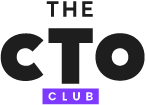It all kicked off with a shiny new launch. Google had just unveiled Gemini’s multimodal features–a technology that looked promising enough to potentially solve human-browser interaction problems. The engineering team figured it’d be a quick, low-risk experiment.
One team tried it. Then another. Then a third.
But while the concept was exciting, the actual tool wasn’t quite there. It was early-stage, not ready for production, and definitely not tailored to the team’s use case.
“It was a distraction that could have easily derailed progress on existing priorities if we hadn’t pumped the brakes,” recalls Anand Sainath, head of engineering and co-founder at 100x, who made the call to stop the integration.
Others haven’t been as lucky, though. For many teams, the chase for the “next big thing” slowly hijacked the product roadmap. What remained was a patchwork of half-baked tools and missed priorities– something Sainath refers to as the quiet cost of shiny object syndrome.
WTF is Shiny Object Syndrome, Anyway?
Shiny object syndrome (SOS) happens when teams get sidetracked by new tools, frameworks, or technologies, often at the expense of existing priorities.
“When a new technology shows up, as is the case for AI today, the market gets excited about its applications. There can be pressure to pivot toward the trend to stay ahead of the competition,” says Raju Malhotra, CPTO at Certinia.
That’s when the “shiny” tool or framework starts creeping into your plans and “pulls engineering away from the work that actually matters today to customers.”
Evernote’s story checks every box on the shiny object syndrome bingo card. It had all the right ingredients: loyal users, a solid product, and a clear niche. Instead of doubling down on its core features, the company branched into physical products and launched undercooked product features like Work Chat.
The product got bloated, performance slipped, and users left for simpler tools like Notion and Google Keep. In 2022, Evernote was acquired, and by early 2023, most of its staff was laid off.
SOS doesn’t always end in bankruptcy or layoffs, but it almost always derails momentum by:
- Delaying project deliverables: Frequent pivots to new technologies mid-project can throw off planning, disrupt execution cycles, and introduce bloated, unplanned scope. That’s exactly what happened with the FBI’s Virtual Case File project. After five years and $170 million spent, the project was abandoned, partly because the shifting bureaucratic-business alignment kept breaking the delivery rhythm.
- Increasing engineering costs: Without a framework to evaluate new technologies, shiny-object-driven decisions often result in tool bloat, technical debt, and high software development costs. Teams even sink time into prototypes that never ship or, worse, get deployed and then rewritten.
- Killing developer productivity: Every new tool means another learning curve, more bugs, and more “quick tests” that rarely stay quick. It spreads engineers thin, reduces productivity by as much as 40%, and leads to fatigue and constant firefighting– energy that could’ve gone into building core product features.
- Eroding stakeholder confidence: SOS also sends the wrong signal to business leaders. When priorities shift too often and timelines slip, the C-suite could begin to question engineering’s ability to deliver. Once trust is lost, it's hard to earn it back.
Stop Shiny Object Regret: 3 Gut-Check Questions For Your Team
You know the kind of havoc shiny object syndrome can wreak on your team. So how do you determine if that new library, SDK, or service is worth it—before it drains time and focus? Our experts have some go-to checks:
- Is it a "Wrapper" or a "Band-aid"?
Sainath’s filter when dealing with shiny new tools/technology is simple: Is this solving something that matters long-term, or is it just a band-aid?
“A band-aid merely patches over minor edge cases or covers short-term limitations. But odds are, the next version of the model will solve that anyway. Then what you’ve built becomes instantly outdated.”
He’s more interested in building wrappers– clean layers on top of foundation models that add actual usability through design, workflows, or context.
“The term LLM wrapper got thrown around almost derogatorily early on, but fundamentally, many valuable products are built upon underlying tech,” comments Sainath. “Look at Cursor. One could argue it's just a wrapper, but it provides significant, focused value.”
In his view, band-aids are distractions that can easily turn into shiny objects. Well-conceived wrappers, on the other hand, can become core products.
- What Are We Choosing Not to Build?
According to Malhotra, tracking what the team chooses not to build is just as important as what makes it onto the roadmap. “It keeps us from chasing features that might look good in a demo but don’t actually improve daily work,” he says.
Even when the team isn’t confident that something is ready for broader rollout, they still test it with early adopters. “That gives us feedback without disrupting the roadmap.”
- What is the Business Value?
For Customer.io’s VP of engineering, Paul Senechko, understanding the business value behind engineering efforts is the first and most critical filter. If a new tool or system doesn’t serve either, he says, it’s probably not the right time for it.
“Our company leadership principle is that we are customer experts,” Senechko explains. “We use this principle to guide our investment in technology to ensure we’re building with the customer and business in mind.”
To keep his team grounded, Senechko relies on a few simple but powerful questions: What does this cost us in terms of time and resources? Does it improve our product? Will it help our customers be more successful?
Sainath adds his own lens, with what he calls the “what if” questions: “What happens if the underlying technology becomes 10x better? Does our product inherently get better, or does it suddenly become irrelevant?”
He also probes the effort required to realize those improvements: “Will we benefit automatically from those gains, or will it require a major re-architecture to catch up?”
Playing out these scenarios with your team can help you make the call, whether to prioritize that shiny new tech stack or stick with what’s already working.
SOS-Proofing Your Roadmap (Without Killing Innovation)
When exciting new tech breaks, you need to take it with a grain of salt and balance innovation with actual progress.
Here’s how CTOs manage the FOMO and keep their teams grounded and focused:
- Define Exit Criteria for Projects Before You Start
A lot of “exploratory” tech trials turn into long-running side hustles with creeping scope and recurring tech debt, mostly because no one defines how or when they end. If there's no ownership, timeline, or success criteria, it’s only a matter of time before Shiny Object Syndrome runs the whole thing into the ground. To avoid that, treat every tech trial like a product feature: scoped, timeboxed, owned, and driven by a real use case.
As Senechko puts it: “Apply to small but real use cases, then go from there. Once we decide to experiment with new trends, we make sure to identify a small or well-contained place where we can test and verify that this works. This way, we can experiment and gain real experience with the technology before making a big bet on it.”
Involve a cross-functional reviewer (EM + PM + staff engineer) for objective evaluation, and create a structured timeline that includes:
- Max duration: Cap at 2 sprints (+1 buffer) to keep it lean and testable
- Go/No-Go milestones with exit conditions: Define an explicit review moment where the team decides to continue, iterate, or stop (over 10% of builds failed, or lack of integration with the CI/CD tool).
Senechko even suggests teams experiment with fixed-time, variable-scope initiatives where his team sets an initial “appetite” for how much time they are willing to spend and aims to deliver the most valuable outcome within that window. “This has allowed us to innovate and fail quickly when those new directions do not appear to be heading in the right direction.”
- Use Metrics to Measure Success
Once the technical feasibility and engineering workload are understood, define what success looks like. That’s the line between a disciplined rollout and a scope-crept SOS project. Build a framework that measures success across multiple dimensions:
- People: Developer productivity boost, increase in deep work hours
- Processes and workflows: Lower test suite runtime, reduced regression rates, leaner deploy workflows, reduced time to market
- Customer experience: Better page performance, fewer UX complaints, improved response times
- System performance: Faster compute, lower infra costs, fewer incidents or rollbacks
- Know Your Customers
“Staying on track comes down to being honest about where the customer value gets created,” Malhotra claims. “Trends may sound exciting, but they can quickly become distractions if they do not directly help customers do their work better or faster.”
That principle shows up in how many teams now pair product and engineering with customer success for live shadowing. A few engineers join support calls, onboarding sessions, or customer check-ins to receive real, unfiltered feedback. Hearing firsthand what confuses users, what breaks, and what gets praised builds empathy and can even sharpen prioritization in engineering teams.
But listening alone isn’t enough. To identify where customers actually struggle, complement qualitative feedback with product telemetry. Chances are, your analytics tool (PostHog, Amplitude, Heap) is underutilized for the purpose. Start tracking how users really interact with the product: down to clicks, toggles, navigation loops, and error paths.
Pair this behavioral data with support tickets to spot patterns. Is a feature getting ignored because it's hard to find? Are users failing to complete critical workflows? Use these as high-signal triggers for customer-centric pilot projects.
Over time, you’ll organically build a "voice of the customer" form with customer pain points, feedback, delight, and recurring blockers that flow from success teams into product and engineering decisions.
It’s the same system Senechko’s team used to prioritize work based on measurable customer value: “A large volume of customers and low latency requirements have driven our team to invent solutions that off-the-shelf techniques could not accomplish. Investing in our technical platform is part of our company’s DNA, as we’ve seen the payoff for customers and the business through doing so.”
Ultimately, real progress for engineering will come from designing new capabilities that extend what already works, not by building around it or bolting on something entirely new. That’s how teams evolve without breaking proven systems.
“Innovation doesn’t have to mean disruption. It should reinforce what already works and help customers move faster with less effort,” Malhotra puts it simply.
Want more insights like this? Subscribe to The CTO Club newsletter.


